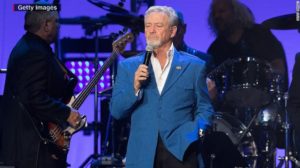The Environmental Justice Academy, which receives funding administered by the Smithsonian American Women’s History Museum, gives students and staff an opportunity to identify and explore issues of environmental inequity impacting their communities.
Amber MimsDecember 11, 2024
When I started as the Program Coordinator for the Environmental Justice Academy (EJA) at the Smithsonian Anacostia Community Museum, I’d heard of “environmental justice” but wasn’t sure what it meant. I was surrounded by experts in this field who spoke passionately about things like “environmental racism,” and “policy advocacy.” I found myself Googling terms, reading articles, and absorbing more content outside of the program with interest in being a part of these conversations. My years of youth development, curriculum creation, and program management started to kick in, and through research and many conversations, I started to understand. Environmental justice isn’t just about saving the planet; it’s about recognizing that certain communities—especially low-income communities, Indigenous groups, and communities of color—are disproportionately affected by environmental issues. These communities often live closer to landfills, factories, and highways. They’re more likely to suffer from air and water pollution. And, because of economic and political disadvantages, they often lack the resources or the voice to fight back. It’s not just an environmental issue—it’s a civil rights issue. And that’s what hit me the hardest: it wasn’t just about trees and recycling; it was about people’s lives and well-being.
One of the most impactful moments I’ve had so far in this position was when we took the Environmental Justice Academy students on a boat ride along the Anacostia River. I live in this neighborhood. I visit this park often, but I’d never taken a boat ride there. It was so beautiful, peaceful, and scenic that I almost forgot I was in Southeast, DC. As we rode along the river, one of our guest speakers, Dennis Chestnut, shared his experiences as a young boy living in the area along the river. He told us there used to be a landfill that the city used as dump right in Kenilworth, and sometimes kids would play in it. This was a city operated landfill, and they would dump and burn trash and other toxic materials. One day the trash was on fire, and a young boy named Kelvin died in the fire. As a result, the dump was closed and eventually turned into a park. Now, as I ride my bike through many parts of that park and look at what it has become, I think of what had to happen for there to be change in this community. Suddenly, the abstract concepts I had been learning about became very real. This wasn’t just theory—this was happening to real people, just because of where they live.
/https://tf-cmsv2-smithsonianmag-media.s3.amazonaws.com/filer_public/e8/2b/e82b2267-08ff-4835-b768-cf4d1c4d69a7/river_tour_0860.jpg)
“The most important thing I learned in EJA is to make everything into a lesson and to go outside. Experience and take in the environment around you.”
-Chloe Thomas, 2024 Environmental Justice Academy Participant
/https://tf-cmsv2-smithsonianmag-media.s3.amazonaws.com/filer_public/d2/43/d243bb93-53ea-48bf-9d1c-8e4396797d6b/eja_arboretum_305.jpg)
“The most important thing I learned throughout the Environmental Justice Academy was the importance of structure and support in a community. When a community is united together, they are much more synchronized in the decisions the members and figures of authority make. A group of people showcases a stronger voice than a singular person. The way I look at the world in general is completely different because of EJA.”
-Jehana Mushin, 2022-2024 Environmental Justice Academy Participant
This journey as Program Coordinator has taught me that environmental justice is about much more than environmentalism. It’s about equity, human rights, and giving marginalized communities the tools they need to advocate for themselves, live a life of wellness, and get what they deserve from their neighborhoods. As someone who knew nothing about the field going in, I can now say that environmental justice is one of the most important movements of our time, and I’m proud to be a part of it. It’s not just about saving the Earth; it’s about saving each other.
The Environmental Justice Academy, which receives funding administered by the Smithsonian American Women’s History Museum, is an annual program that engages 35 youths living in communities in and near the Anacostia Watershed in explorations of the intersections of community, justice, and environment.




